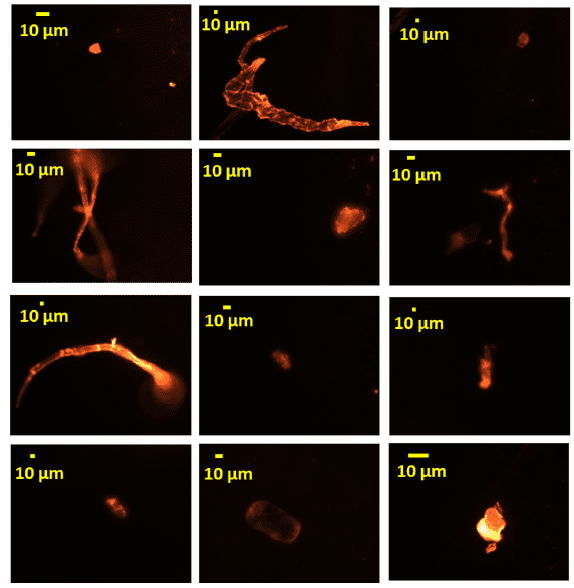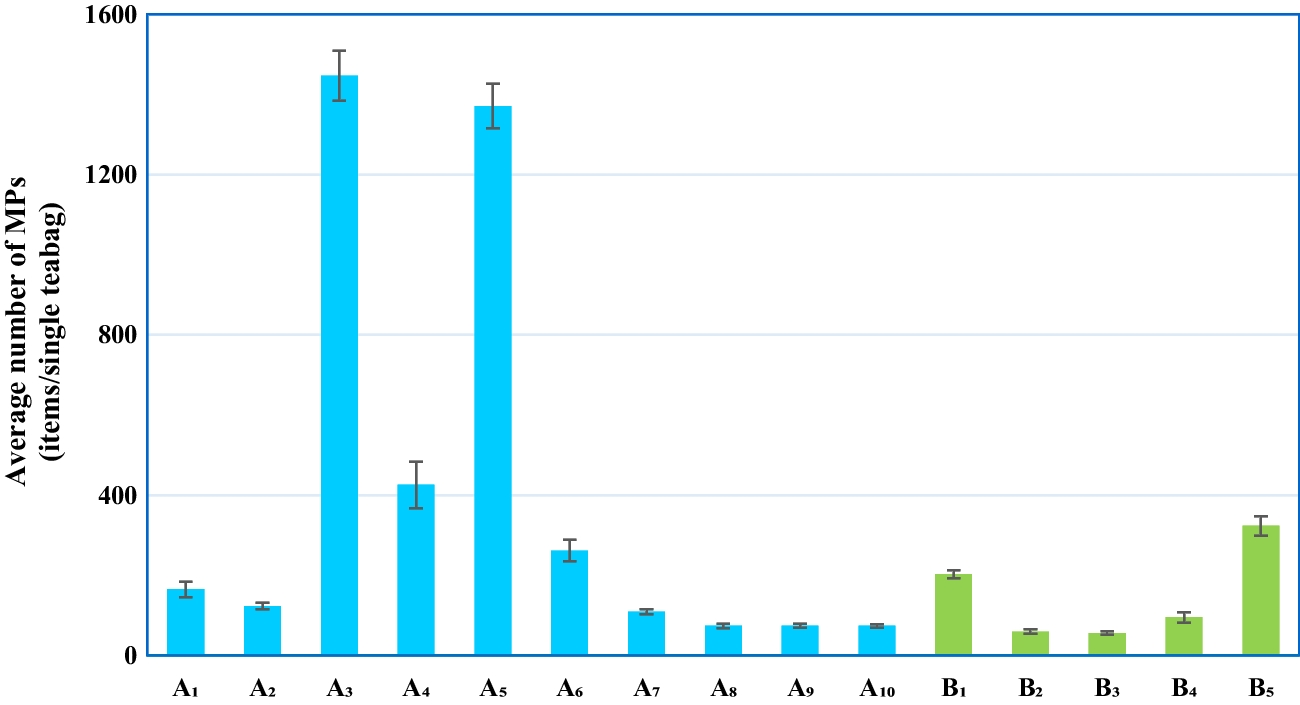I have been meaning to post this for a while. I don't often drink coffee, let alone buy one from a cafe. However, recently I went into a cafe and asked for a decaf coffee. I very nearly ordered it in a to-go cup... but Knowledge Protected! I had remembered reading this:
The quote above is from this document below, which was put together by Gaby. Thank you, @Gaby - there are some totally awesome gems in there! I learned a lot from reading it, and I appreciate the time that was spent putting it goether.
The associated connotations of 'paper cup' suggest it is somehow 'eco-friendly' - and meanwhile, it is actually a pretty significant source of human plastic ingestion. It's a great representation of the main logic of the green agenda... it's great for the planet, and so we can all feel warm and fuzzy about being good caring people, but in the meantime, it's main goal is to weaken, degrade, and sicken the human population.
While I knew that BPA was bad news, I had forgotten what it actually is associated with biologically. It is nuts:
So drinking coffee from a plastic cup sounds quite terrible for one's health, all things considered. If you drink 3 cups a day, for instance - according to the numbers given for the 'Le et al.' study - that could result in 165 times the usual exposure to BPA! Crazy.
I wanted to see if there had been any more stuff had been published about these not-so-innocuous 'eco-friendly' drinking vessels. In addition to the concern over BPA, a recent study discussed the issue leaching microplastics more generally:

 www.zmescience.com
www.zmescience.com
There's another study I found that seems on point here, though I don't think that article itself exists anymore in an online available form. At any rate, there is another researcher in agreement with the claim that chemicals from paper cups are able to migrate into the body.

 www.foodpackagingforum.org
www.foodpackagingforum.org
So, beware at the cafe, fellow forumites!
Plastics that are worn out or that are heated in the microwave or just by drinking a hot cup of coffee from a plastic-lined paper cup could expose you to 55 times more BPA than usual thereby constituting the greatest threat (Le et al., 2008).
The quote above is from this document below, which was put together by Gaby. Thank you, @Gaby - there are some totally awesome gems in there! I learned a lot from reading it, and I appreciate the time that was spent putting it goether.
The associated connotations of 'paper cup' suggest it is somehow 'eco-friendly' - and meanwhile, it is actually a pretty significant source of human plastic ingestion. It's a great representation of the main logic of the green agenda... it's great for the planet, and so we can all feel warm and fuzzy about being good caring people, but in the meantime, it's main goal is to weaken, degrade, and sicken the human population.
While I knew that BPA was bad news, I had forgotten what it actually is associated with biologically. It is nuts:
BPA and phthalates are endocrine disrupting chemicals which mimic hormones such as estrogen and they're linked with breast and prostate cancer, early onset puberty, type 2 diabetes, inflammation, attention deficit, hyperactivity, inability to handle stress, violence, increased mental disease, decreased intelligence, drug addiction, loss of normal parental instincts, infertility, abnormal sexual behavior, altered immune function, increased fat formation, structural damage to the brain, heart disease, developmental problems, male genital defects, reduced testosterone levels, liver function problems, liver cancer, ETC! By mimicking estrogen, it compounds the estrogen dominance epidemic we see nowadays, with children being most vulnerable to be affected. BPA is by itself so powerful that even at extremely low levels -parts per billion or even parts per trillion – it can cross the placenta and alter the mammary gland of a developing fetus, increasing breast cancer risk later in life.
...
Even the so called “BPA-free” plastic food containers and baby bottles were found to have estrogenic activity (Yang et al., 2011). In fact, most plastic products you buy at stores have chemicals with estrogenic activity.
So drinking coffee from a plastic cup sounds quite terrible for one's health, all things considered. If you drink 3 cups a day, for instance - according to the numbers given for the 'Le et al.' study - that could result in 165 times the usual exposure to BPA! Crazy.
I wanted to see if there had been any more stuff had been published about these not-so-innocuous 'eco-friendly' drinking vessels. In addition to the concern over BPA, a recent study discussed the issue leaching microplastics more generally:

Coffee with a side of microplastics: paper cups likely leach plastic into your cup of joe
Paper cups have a plastic layer, which release microplastics when in touch with hot water
 www.zmescience.com
www.zmescience.com
For people who have their coffee on the go, paper cups have become the preferred go-to choice. They’re lightweight, easy to handle, and cheap, but there’s a catch: they’re coated with plastic. This actually makes them non-recyclable and non-biodegradable (and is the reason why they don’t melt).
Now, researchers have found another reason to ditch them: they might be leaking plastic into your coffee.
Disposable paper cups are made of 90–95% paper, and the remaining 5–10% is a hydrophobic plastic film. Mostly, the interior layer is made of Polyethylene (PE). Studies have shown in the past that that harmful chemicals and substances can leach from paper into the food or drink meant for human consumption.
So far, concerns regarding leaching of microplastics from these food packaging materials have rarely been addressed or quantified by researchers. Microplastics have been identified in many food substances like salt, branded milk, fish and other seafood, and tea from teabags, with still unknown consequences for our health.
“Microplastics act as carriers for contaminants like ions, toxic heavy metals such as palladium, chromium and cadmium, as well as organic compounds that are hydrophobic,” said Sudha Goel, one of the authors of the study in a statement. “When ingested regularly over time, the health implications could be serious.”
With this in mind, Sudha and other researchers from the Indian Institute of Technology (ITT) decided to identify the types of plastic layers used in paper cups and evaluate the changes in their mechanical, physical, and chemical properties when they come in contact with hot liquid. They also quantified the microplastic load in the liquid.

Images of the microplastic remnants in hot water after leaving it in the paper cups for 15 min, viewed under fluorescence. Image credits: Ranjan et al.
The researchers poured hot water into the disposable paper cups and allowed it to sit for 15 minutes. The water was then analyzed for the presence of microplastics as well as additional ions that may have leached into the liquid from the paper cup. They also looked at the changes experienced in the properties of the plastic films of the cup.
They found that 25,000 micron-sized microplastic particles are released into 100 mL of hot liquid (85 to 90ºC) residing in the paper cups for 15 minutes. Thus, an average person drinking three regular cups of tea or coffee daily, in a paper cup, would be ingesting 75,000 tiny microplastic particles.
“This study shows that careful consideration needs to be done before the promotion of replacements for bio-hazardous products and environmental pollutants. We have been quick to replace plastics cups and glasses with disposable paper cups,” said IIT-Kharagpur director, Virendra Tewari, in a statement.
Still, the researchers acknowledge that the convenience of paper cups is such that it is hard to find a suitable replacement, especially in modern office settings where paper cups go with coffee-vending machines. Globally, some 264 billion paper cups were produced in 2019 for consuming food and beverages.
Still, potential solutions are coming in at all angles, from every corner of the world. Reusable cups from bamboo or other non-plastic materials are popping up more and more. Entrepreneurs have developed reusable cup rental systems, plant-based and biodegradable single-use cups, fiber-based cups and lids, compostable cups grown from mushrooms, and a gourd cup grown in 3D-printed molds. The solutions exist. They may require an extra bit of effort compared to paper cups, but they exist.
The study was published in the Journal of Hazardous Materials.
There's another study I found that seems on point here, though I don't think that article itself exists anymore in an online available form. At any rate, there is another researcher in agreement with the claim that chemicals from paper cups are able to migrate into the body.

Chemicals in coatings of coffee to go cups | Food Packaging Forum
In an article and TV report published on May 22, 2017 by the German TV station NDR, journalist Heike Dittmers reported on the inner plastic coating of coffee to go cups. Dittmers collected samples of coffee to go cups from McDonald's, Tchibo, Starbucks, von Allwörden, and an unspecified canteen...
In an article and TV report published on May 22, 2017 by the German TV station NDR, journalist Heike Dittmers reported on the inner plastic coating of coffee to go cups. Dittmers collected samples of coffee to go cups from McDonald’s, Tchibo, Starbucks, von Allwörden, and an unspecified canteen, and sent them to a certified laboratory for chemical analysis of the coatings. In three cups (canteen, Starbucks, McDonald’s) the plasticizer diisodecyl phthalate (DIDP, CAS 26761-40-0) was measured at 0.03 mg/kg, 0.06 mg/kg, and 0.10 mg/kg, respectively. In two cups (McDonald’s, von Allwörden) a mix of hydrocarbons was measured at 0.41 mg/kg and 4.86 mg/kg, respectively.
According to Dr. Jane Muncke from the Food Packaging Forum, chemicals from the coating can migrate into hot (and particularly into fatty) drinks such as coffee (e.g. with milk). The legal migration limit for DIDP is 9.5 mg/kg. However, Dr. Muncke highlights that phthalates are suspected endocrine disrupting chemicals (EDCs) and people are exposed to these substances not only from coffee to go, but also from other food and drink products contaminated with phthalates by the packaging or during production processes. Regarding the mix of hydrocarbons, Dr. Muncke suspects that the detected long-chain hydrocarbons could accumulate in body fat.
Heike Dittmers (May 22, 2017). “Kaffeebecher: Was steckt in der Beschichtung?” NDR (in German)
So, beware at the cafe, fellow forumites!

